Hanoi is a most beguiling city. Densely populated and heavily trafficked – an estimated five million motorbikes among a population of seven million people – but not fast-paced or clamorous. And all around there are shaded parks and lakes offering peace and tranquillity.
Stepping out into the sea of traffic to cross the road, newcomers fear for their lives, but the riders and drivers steer sedately around you and I have yet to see a pedestrian struck by a vehicle. Hanoi is an easy and safe city for walking, day or night.
Most of Hanoi’s streets are prefixed with the word Phố, as shown on the street sign in the picture above, while larger roads and boulevards are called Duong.
Hanoi has preserved its past far better than its bigger cousin to the south and in so doing has created a cultural city that is authentically Vietnamese to its core. Founded over 1,000 years ago, Vietnam’s capital city is rich in history with the streets of its rambling old quarter dating back to the 14th century.
Hanoi is set out along the Red River, which has three main bridges crossing it. The oldest and the first steel bridge is the Long Bien Bridge (below), designed by Gustave Eiffel and completed in 1903.
It was heavily bombed in the Vietnam War and today is used only by pedestrians, bikes and trains. Just to the south is the newer Chuong Duong Bridge, and north of the city, servicing the airport, is the Thang Long Bridge.
There is so much to see in and around Hanoi that it’s difficult to know where to start, but I’ll begin with Hoan Kiem Lake and what’s on and around it.
Situated in the very centre of Hanoi, Hoan Kiem Lake is one of the most popular historical attractions for tourists and locals alike. Surrounded by park-like grounds, it's known for its peaceful atmosphere and commanding position.
However, Hoan Kiem Lake is more than just a place to relax, it’s the site of an ancient legend that dates back to the 15th century.
The legend is too long to recite here but suffice it to say that the emperor of the day used a particular sword in the fight against Chinese oppressors, and after they were overpowered he returned the sword to the lake from whence it came. The lake was then named Hoan Kiem, which means Lake of the Returned Sword.
In the middle of the lake is Turtle Tower, or confusingly is might be Tortoise Tower as the two names seem to be used interchangeably in Hanoi. I think tortoise might be correct as the tower’s Vietnamese name is Thap Rua and I believe “rua” means tortoise.
Thap Rua has a unique combination of local Vietnamese and French colonial architecture and was built in 1886 on the site where another temple, Ta Vong, used to stand. The tower that stands there now was erected on the same site to commemorate the emperor I mentioned above. His name was Le Loi and apart from returning the sword to the lake and giving the lake its name, he is credited with liberating Vietnam from Chinese control in 1428. He went on to found the Later Le dynasty and became the most honoured Vietnamese hero of the Middle Ages.
Nowadays, the Lake of The Returned Sword has a much more peaceful life and visitors tend to view Thap Rua from a distance, although they visit Ngoc Son Temple (see below) in droves.
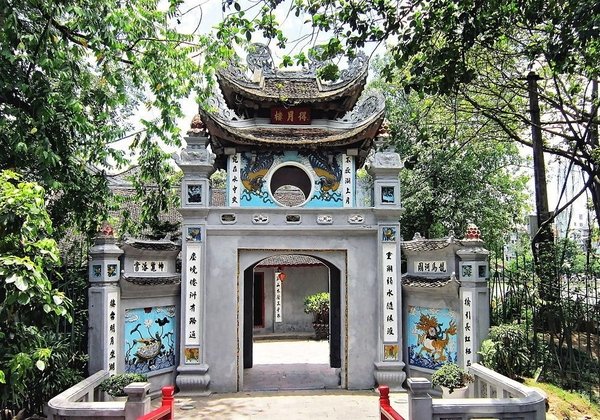
Ngoc Son Temple, or the Temple of the Jade Mountain, is also situated on an island at the northern end of Hoan Kiem Lake. To get there you have to cross the red-coloured Huc or Sunbeam Bridge.
The Huc Bridge was built in 1865 during the reign of King Tu Duc with the aim of connecting Ngoc Son Temple to the shore. No one seems to know how the crossing was made before the bridge was built, but I assume it was by boat.
This bridge has a curved shape which, together with its 16 pairs of legs, gives the structure a shrimp-like appearance. It has a deck paved with wooden boards and the handrails and legs are painted vermillion red. In Vietnam and other East Asian countries red is a positive colour associated with good fortune.
Ngoc Son Temple is dedicated to Confucian and Vietnam national hero Tran Hung Dao. It was originally a small temple but was expanded in 1865.
Vietnamese authorities describe Ngoc Son Temple and its surrounding artifacts as the architectural phenomena of Hanoi, and these include the Pen Tower and the Ink Slab, the impressive stone features contributed by Nguyen Van Sieu, a 19th century poet and cultural researcher noted for his academic brilliance at an early age.
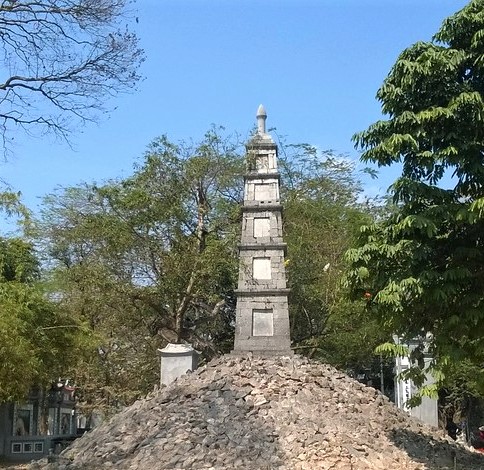
The tower, resembling a pen with its nib pointing to the sky, sits on a rock pile that represents the earth. The meaning of the Pen Tower is depicted in three words ‘Ta Thanh Thien’ (Writing on the blue sky), carved on a stone slab next to the tower.
Hoan Kiem Lake is a perfect place to sit and observe the Hanoian pace of life. The site is a source of pride for those living in the city, and they delight in showing it off to visitors.
Title picture: the entrance to Tran Quoc Pagoda.
In a later feature: a look at some of Hanoi’s most prominent buildings.

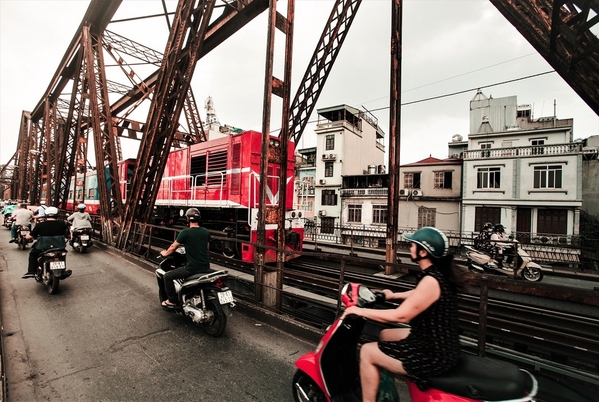
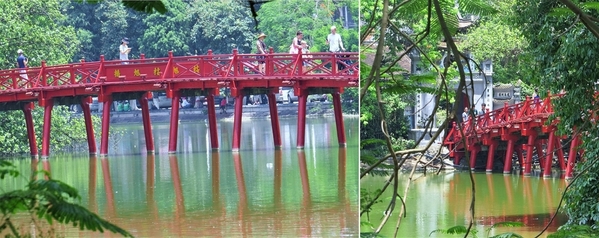

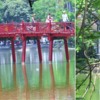
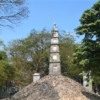

Comments (2)